
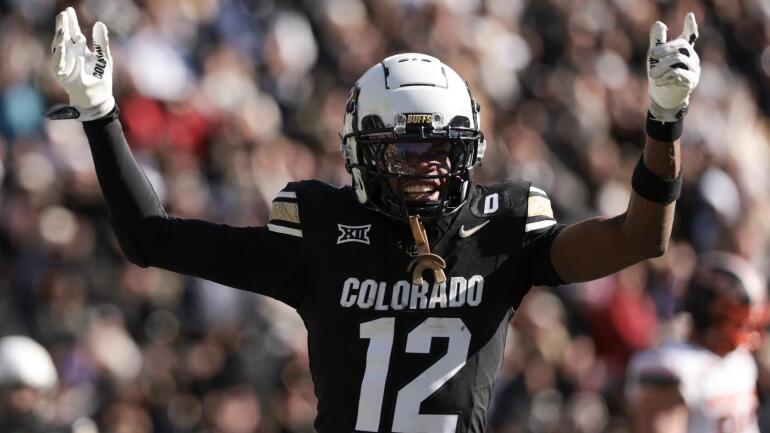
A handful of 2025 NFL Draft picks will sign their contracts over the next couple of days, which coincides with the start of rookie minicamps. NFL teams will hold a three-day rookie minicamp either this weekend (May 2-4 or May 3-5) or next weekend (May 9-11). Expect around half of the draftees to sign contracts within two weeks of the draft’s completion.
Here’s a look at the deals a select group of first-round picks are expected to sign. An explanation of how the rookie wage scale operates as well as a discussion highlighting important considerations or issues relating to the first-round contracts follows.
|
Pick |
Name |
Club |
Salary cap number |
Signing bonus |
4-year total |
|
1 |
$8,879,928 |
$32,159,712 |
$48,839,604 |
||
|
2 |
$8,481,657 |
$30,566,628 |
$46,649,114 |
||
|
3 |
$8,228,214 |
$29,552,856 |
$45,225,177 |
||
|
4 |
$7,938,563 |
$28,394,252 |
$43,622,097 |
||
|
5 |
$7,431,671 |
$26,366,684 |
$40,874,191 |
||
|
6 |
$6,526,511 |
$22,746,044 |
$35,895,811 |
||
|
7 |
$5,802,382 |
$19,849,528 |
$31,913,101 |
||
|
8 |
$5,078,253 |
$16,953,012 |
$27,930,392 |
||
|
9 |
$5,042,045 |
$16,808,180 |
$27,731,248 |
||
|
10 |
$4,842,910 |
$16,011,640 |
$26,636,005 |
||
|
14 |
$3,811,027 |
$11,884,108 |
$20,960,649 |
||
|
15 |
$3,738,613 |
$11,594,452 |
$20,562,372 |
||
|
21 |
$3,267,928 |
$9,711,712 |
$17,973,604 |
||
|
25 |
Giants |
$3,086,898 |
$8,987,592 |
$16,977,939 |
|
|
27 |
$3,014,483 |
$8,697,932 |
$16,579,657 |
||
|
32 |
$2,668,246 |
$7,312,984 |
$14,675,353 |
How rookie wage scale operates
The rookie wage scale is essentially a salary cap within the overall salary cap. The increases in rookie salaries from one draft class to another are primarily tied to growth of the salary cap. Signing bonuses are going up 25.93%, which is the biggest increase since the rookie wage scale was implemented with the 2011 NFL Collective Bargaining Agreement. The money borrowed from future rookie wage scales to keep 2021 rookie deals from decreasing because of the 2020 revenue shortfall caused by COVID-19 has been repaid.
There’s a league-wide limit on the total amount of compensation for rookies with specific salary parameters for each draft slot. Teams have maximum and minimum amounts that can be spent on their picks based on draft position.
All contracts for draft choices are four years. Each pick in the draft has a salary floor and ceiling in the first year and over the four years of the contract. There are very few negotiable items with rookie contracts anymore. The salary components of a deal are restricted to signing bonus, base salary, roster bonus, reporting bonus, workout bonus and select incentives. The type of salary escalators and incentives that used to be responsible for salaries skyrocketing at the top of draft are prohibited under the rookie wage scale. A majority of picks only have signing bonus and base salaries in their deals.
An extremely important aspect of these deals is the first-year salary cap number (also known as the rookie pool number) because it helps determine the overall value of a contract. The first-year cap number or rookie pool number consists of the player’s prorated amount of signing bonus and the rookie minimum base salary, which is $840,000 in 2025.
The maximum annual increase in each of the four years of a deal is 25% of the first-year cap number. To illustrate this concept, 2024 12th overall pick Bo Nix’s cap numbers were limited to an $846,053 increase in each year of his deal because his first-year cap number was $3,384,212. Since all of these deals have minimum base salaries in the first year, the remainder of the contract is derived within these constraints.
Draft pick contracts can’t be renegotiated until the conclusion of a player’s third NFL regular season. This means the earliest Nix’s deal can be redone is in January 2027.
Teams have an option for a fifth year with first-round picks that must be exercised after the third year of the deal. The period for exercising fifth-year options begins after a player’s third NFL regular season ends (Jan. 6, 2025 with the 2022 first-round picks). These options must be picked up prior to May 3.
The 2020 CBA changed how fifth-year options operate. The fifth-year salary is fully guaranteed when the option is exercised. A player’s fourth-year base salary becomes fully guaranteed when the option year is picked up if it wasn’t already.
The fifth-year salaries are no longer strictly tied to where a player was drafted (i.e.; top 10 or outside of top 10). Performance dictates the option-year salaries. With two or more Pro Bowl selections on the original ballot during the first three seasons of contracts, the fifth-year salary is the franchise tender, which is the average of the five highest salaries, for a player’s position in the fourth year of his contract. For example, 2022 fourth overall pick Sauce Gardner’s fifth-year option with the New York Jets for 2026 is the 2025 franchise tender for cornerbacks, which is $20.187 million, because he was selected to the Pro Bowl on the original ballot in his first two NFL seasons (2022 and 2023).
One Pro Bowl selection on the original ballot during the first three seasons of deals puts the fifth-year salary at the transition tender, which is the average of the 10 highest salaries, for a player’s position in the fourth year of his contract. Detroit Lions defensive end Aidan Hutchinson falls into this category. Hutchinson’s fifth-year option in 2026 is $19.872 million, the 2025 transition tag for defensive ends.
Participating in 75% of offensive or defensive plays, whichever is applicable, in two of the first three seasons of deals or an average of at least 50% playtime in each of their first three seasons sets the fifth-year salary at the average of the third through 20th highest salaries at a player’s position. For first-round picks who don’t fall into any of these three categories, the fifth-year salary is the average of the third through 25th highest salaries at a player’s position.
The Proven Performance Escalator, which increases the fourth-year salary for third- through seventh-round picks, now also applies to second-round picks and is more expansive with higher playtime thresholds.
Third- through seventh-round picks still have a salary escalator for their fourth year based on participating in a minimum of 35% of the offensive or defensive plays, whichever is applicable, in two of the first three seasons of their deals or an average of at least 35% playtime in their first three seasons. The salary equals the original draft round restricted free agent tender in the fourth year. The number is $3.406 million this year. With second-round picks, the required playtime is 60% in two of the first three seasons of their contracts in order for the fourth-year salary to be at this level.
The fourth-year salary for second- through seventh-round picks increases to the original draft round restricted free agent tender in that specific year, plus $250,000 with at least 55% offensive or defensive playtime in each of their first three seasons of the contract: $3.656 million is the number for this year. Fourth-year salary will elevate to the second-round restricted free agent tender with at least one Pro Bowl selection on the original ballot in the first three years of a rookie deal. The second-round restricted free agent tender is $5.346 million this year.

Negotiable items
There are very few negotiable items with rookie contracts anymore. The two primary negotiating issues, particularly at the top of the draft, are the payment schedule of the signing bonus and whether salary guarantees will have offsets. Another important consideration is the language outlining the voiding of salary guarantees.
A majority of rookies didn’t sign contracts until the latter part of July as training camp approached before the rookie compensation system was overhauled in the 2011 CBA. In 2010, no player selected in the first two rounds had signed by the Fourth of July. First-round picks holding out wasn’t unusual either. For example, 2007 first overall pick JaMarcus Russell held out for 47 days before signing with the Oakland (now Las Vegas) Raiders. Rookie holdouts are largely a thing of the past.
The Los Angeles Chargers and third overall pick Joey Bosa engaged in the longest contract dispute for an incoming NFL player under the rookie wage scale in 2016. Bosa was the first rookie since 2013 who didn’t show up to training camp on time. He missed 31 days before signing his contract.
The Chargers and Bosa weren’t disagreeing over the amount of money in his contract because the total value was dictated by the rookie wage scale’s constraints. The dispute was largely over the payment schedule of Bosa’s signing bonus, the inclusion of roster bonuses and related language if the deal contained offsets. A major concession the Chargers made to Bosa was a better payment schedule than they typically give to players with big signing bonuses.
Linebacker Roquan Smith, 2018’s eighth overall pick, missed the first two weeks of training camp because he and his agents objected to language where the Chicago Bears had the right to void his guarantees for an ejection or suspension from a game for violating NFL playing rules. A compromise was reached on the number of games in a suspension necessary to trigger voiding.
An offset clause allows a team to reduce the guaranteed money owed to a player when he is released by the amount of his new deal with another team. The player receives his salary from the team that released him in addition to the full salary from his new contract with another club when there isn’t an offset (also known as “double dipping”).
Agents have essentially lost the battle on offsets. Teams with early first-round picks in 2013 were adamant that contracts contain offsets after largely conceding the issue the previous year. As a compromise for top-10 picks, teams structured deals with minimum base salaries in the final three years where the remainder of a player’s salary is in annual fully guaranteed third or fifth day of training camp roster bonuses.
Nearly every team besides the Jacksonville Jaguars and the Los Angeles Rams require offsets with salary guarantees for draft picks, including those selected in the top 10. Based on past practices, second overall pick Travis Hunter’s contract with the Jaguars shouldn’t contain offsets.
A quarterback has the best chance of extracting a concession on offsets than players at other positions. Cam Ward, the 2025 first overall pick by the Tennessee Titans, has ammunition thanks to Marcus Mariota, the second overall pick in 2015, provided he presses the issue. Mariota was the last first-round pick to sign in 2015. The delay was because of a disagreement over offset language.
The Titans compromised where Mariota obtained provisions that none of the team’s other first-round picks following him have gotten in their contracts. Mariota’s training camp roster bonuses in 2016 through 2018, where most of the money was in the last three years of his rookie contract, didn’t have offsets. The concession was made because the Titans didn’t want Mariota missing the start of training camp in a contract dispute since he was going to be the opening day starting quarterback.
The multiple changes in the front office with the Titans since Mariota signed may not be an impediment for Ward. The chief contract negotiator has remained the same. Vice President of Football Administration Vin Marino has been negotiating player contracts since 2007.
Curiously, 2024 first overall pick Caleb Williams didn’t capitalize on the precedent the Bears had set regarding offsets with first-round quarterbacks. All of Williams’ salary guarantees have offsets.
Mitchell Trubisky, the second overall pick in 2017, signed a deal with the Bears where his $465,000 2017 base salary and training camp roster bonuses in 2018 through 2020, which contained most of the money in the last three years of his contract, didn’t have offsets. His league minimum base salaries in the last three years of his contract had offsets.
Justin Fields, the 2021 11th overall pick by the Bears, got similar treatment as Trubisky. His $660,000 2021 base salary and 2022 through 2024 training camp roster bonuses were without offsets. Fields had a minimum base salary in 2022 with the rest of his money in a training camp roster bonus. His compensation in both 2023 and 2024 was split evenly between base salary and a training camp roster bonus.
More players throughout the first round are pushing for training camp roster bonuses since base salary is no longer paid over the course of the 18-week regular season. Training camp roster bonuses are typically paid by the end of August at the latest. Beginning in 2021, base salary started being paid over a period of 36 weeks (twice the number of regular-season weeks).
Jordan Addison, the 2023 24th overall pick by the Vikings, was the last player taken in the first round to have any training camp roster bonuses. Training camp roster bonuses extended to 26th overall pick Graham Barton last year.
It may make sense for all of a first-round pick’s fourth-year compensation to be in base salary to preserve options in the event there’s an acrimonious negotiation for a contract extension after playing three NFL seasons. A training camp holdout wasn’t a realistic possibility for Cincinnati Bengals wide receiver Ja’Marr Chase, who was 2021’s fifth overall pick, last July. If he hadn’t reported by the third day of training camp, he would have forfeited his $3,807,679 roster bonus. With the $3,807,679 as base salary, Chase wouldn’t have been facing this type of financial penalty by holding out.
Large signing bonuses in NFL contracts aren’t typically paid in one lump sum. This is a long-standing practice in the NFL. Signing bonuses for top draft picks have typically been paid in multiple installments.
Lump-sum payments are starting to become more accepted at the top of the first round. Generally, quarterbacks have been more successful in getting signing bonus paid in its entirety shortly after signing. That was the case last year with Williams, Jayden Daniels, Drake Maye, Michael Penix Jr., J.J. McCarthy and Nix, who were the first, second, third, eighth, 10th and 12th overall picks. These quarterbacks were the only first-round picks to have signing bonus paid in a lump sum last year.
This means the Titans should do the same for Ward. Hunter could be the only other first-round pick with a lump-sum signing bonus payment. A non-quarterback taken after the second overall pick has never gotten his signing bonus in a lump sum.
The Jaguars made a big departure from their customary signing bonus payment schedule with 2021 first overall pick Trevor Lawrence. His entire $24,118,900 signing bonus was payable within 15 business days of signing. Edge rusher Travon Walker, the 2022 first overall pick, was able to get the same payment schedule as Lawrence from the Jaguars with his $24,360,088 signing bonus.
Conventions with the second overall pick, regardless of position, also cut in Hunter’s favor. Every second overall pick since 2019 besides Hutchinson received their respective signing bonuses in a single payment. This includes edge rushers Nick Bosa and Chase Young in 2019 and 2020.
It will be interesting to see whether the lump-sum signing bonus payment with quarterbacks applies to Jaxson Dart since he was the 25th overall pick. It’s something the New York Giants haven’t done with first-round picks. The best payment schedule went to quarterback Daniel Jones, 2019’s sixth overall pick. He got 90% of his $16,684,768 signing bonus a week after signing and the remaining 10% (or $1,668,477) in the middle of that September.
Edge rusher Abdul Carter, who the Giants selected with the third overall pick, may want to wait for Dart to sign. The Giants will have a hard time getting Carter to accept less favorable signing bonus terms than a player taken 22 slots later. Wide receiver Malik Nabers, 2024’s sixth overall pick, and edge rusher Kayvon Thibodeaux, 2022’s fifth overall pick, each received 72% of their signing bonus within a couple weeks of execution. There were two other installments in September and October with 18% and the final 10%, respectively.
This news was originally published on this post .






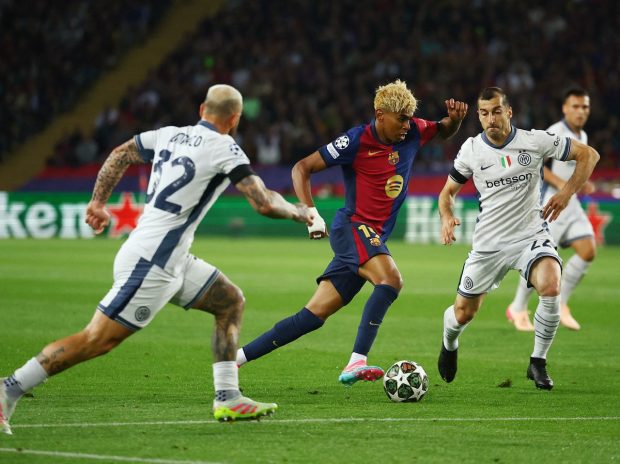
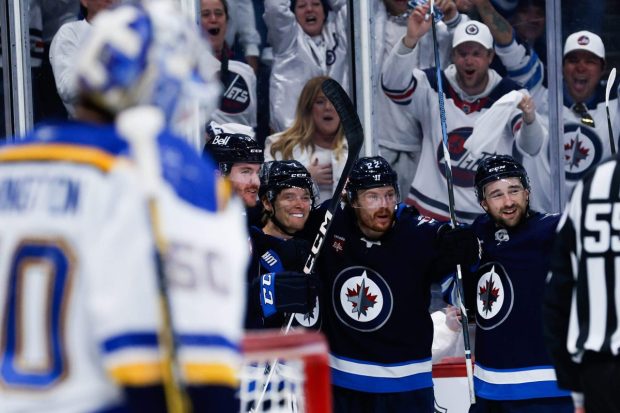

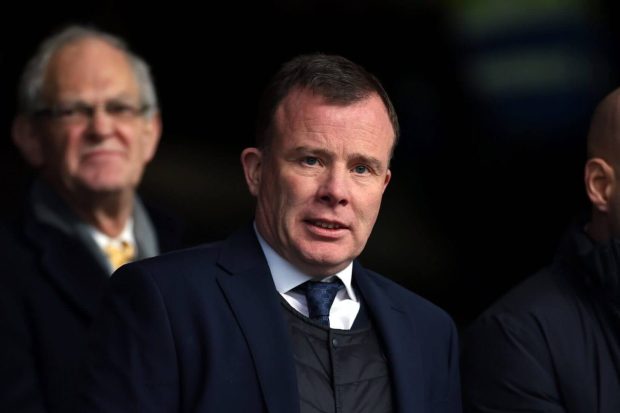
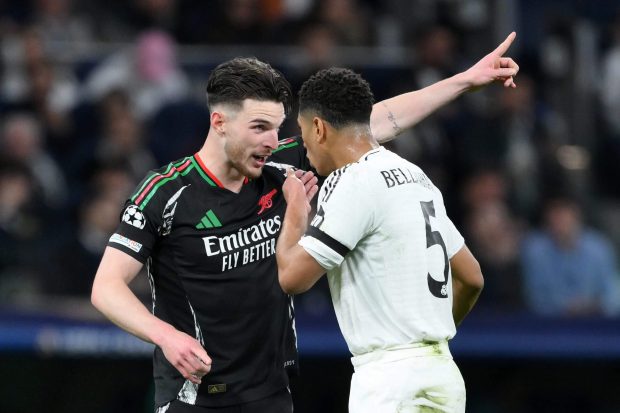

Be the first to leave a comment